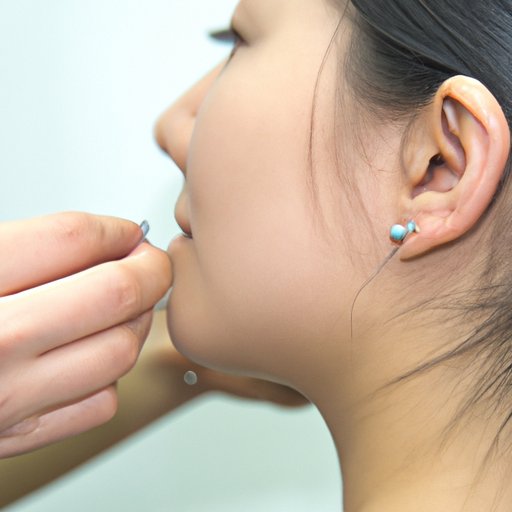How Long Do Ear Piercings Take to Heal?
Ear piercings are one of the most popular types of body modification out there. They’re relatively simple, highly customizable, and can add a touch of personality and style to any outfit. However, one thing that many people don’t fully consider before getting their ears pierced is the healing time involved.
Healing times for ear piercings vary depending on several factors, including the location of the piercing and individual differences in the healing process. In this article, we’ll explore the pros and cons of different piercing types, the healing process of piercings, and the importance of aftercare for optimal healing. We’ll also hear personal stories from individuals with a variety of piercings and discuss different healing times for traditional and newer piercing methods.
Pros and Cons of Different Ear Piercing Healing Times
As mentioned, the location of an ear piercing can have a big impact on healing time. Here’s a breakdown of the healing times you can expect for various types of ear piercings:
- Earlobe piercings: 4-6 weeks
- Cartilage piercings (helix, tragus, conch, etc.): 3-12 months
- Daith piercings: 3-6 months
- Rook piercings: 3-9 months
- Industrial piercings: 6-12 months
While the longer healing times for cartilage piercings can be frustrating, they often result in more unique and striking designs. Additionally, cartilage piercings tend to be more prone to infections and require special care during the healing process. Earlobe piercings, on the other hand, are generally easier to heal and less prone to complications.
The Healing Process of Ear Piercings
No matter what type of ear piercing you get, the healing process will take place in three phases: the inflammatory phase, the proliferative phase, and the remodeling phase. During the inflammatory phase (around the first three days), the body will begin to respond to the injury by sending white blood cells to fight infection. After this phase, blood vessels will form in the area during the proliferative phase (up to several weeks), bringing oxygen and nutrients to the healing tissue. Finally, during the remodeling phase (up to one year), the tissue will continue to mature and strengthen until it’s fully healed.
There are several factors that can affect the healing process. Some people may find that they heal more slowly or are more prone to infections due to their age, health condition, or the material of their jewelry. However, there are several steps everyone can take to promote faster healing, such as taking over-the-counter anti-inflammatory medication, gently massaging the area to increase blood flow, and avoiding excessive movement or trauma to the area.
Aftercare Matters
Proper aftercare is absolutely crucial for the healing of a new ear piercing. Failure to follow the proper steps can lead to infection, prolonged healing times, and in some cases, even the loss of the piercing itself. Here are some steps to follow when caring for a new piercing:
- Keep it clean: Use a sterile saline solution to gently clean the area at least twice a day, using clean hands or a sterile cotton swab.
- Avoid irritation: Keep the area dry and avoid sleeping on it. Avoid harsh chemicals and swimming until the piercing is fully healed.
- Choose appropriate jewelry: Choose high-quality jewelry made from materials such as surgical steel, titanium, or gold. Avoid jewelry made from nickel or other cheap metals that can trigger allergies or infections.
Following these steps can help ensure that your new piercing heals quickly and safely.
Personal Stories of Ear Piercing Healing
Everyone’s experience with ear piercing healing is unique, and hearing from others can help give you a better idea of what to expect. Here are some quotes and insights from individuals with a variety of piercings:
“My tragus piercing took about 8 months to fully heal, but it was totally worth it. I love the unique look it gives me, and I’ve never had any issues with it since.” – Ashley, 27
“I got my industrial piercing done with a gun when I was younger and it was a nightmare. It took over a year to heal, and I had constant pain and infections in the meantime. I eventually took it out and got it redone with a needle a few years later, and it was so much easier and faster to heal.” – Michael, 30
What these stories demonstrate is that healing times can vary greatly depending on individual circumstances and piercing method.
Comparison of Healing Times for Different Piercing Methods
When it comes to piercing methods, two of the most common options are traditional needles and piercing guns. However, newer techniques such as dermal piercings have also gained popularity in recent years.
In general, needle piercings tend to be safer, more precise, and less painful than gun piercings. They also tend to heal faster and have fewer complications. However, gun piercings are generally less expensive and quicker to do.
Dermal piercings, which involve implanting a piece of jewelry into the skin, tend to have longer healing times (around 3-6 months) and require more specialized care. However, they can offer unique designs and a more permanent alternative to traditional piercings.
Conclusion
Ear piercings can be a beautiful addition to any look, but they do require some patience and proper care to heal correctly. By following the tips and insights discussed in this article, you can ensure that your new piercing heals quickly and safely, and that you’re left with a gorgeous and unique accessory for years to come.
